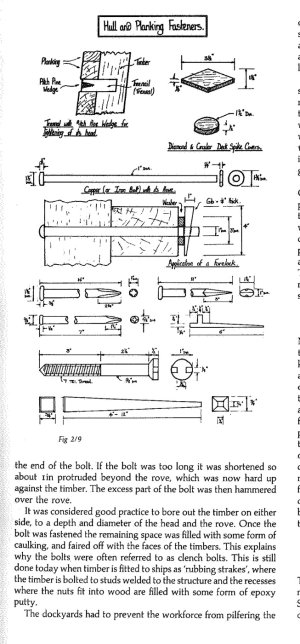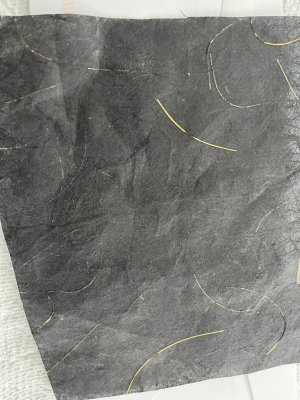Hi Allan. Here is what I found in Goodwins’ The construction and fitting of the sailing man of war; Reading this you are correct in that the planking is secured by treenail while the copper bolts seemed to be used below the waterline. Some pics from the book.Hi Grant,
I was just going to look up when the change from wood to metal occurred on the hull and the decks.Thanks for the little push
For the hull, David Steel gives diameters of treenails for bottom planking of a 28 gun ship at 1 3/4" diameter PLUS one bolt in the timber next to each butt and clenched inside - 7/8" diameter He does not name what type of bolt material was used. So, it sounds like there is a combination, at least in the late 18th century. There is no information on the size of the trennals in the Establishments that I could find so I have no idea when metal came into use along with the wooden treenails.
From the contract for Enterprize's sister Aurora 16 July 1776,
All the treenails to be dry seasoned, clear of sap, & converted from timber of the growth of Sussex, or equal in goodness thereto, to be well mooted, not overhauled with an ax in driving, & all to be caulk’d or wedg’d at both ends ~~~~~~~~~~~~~~~~~~~~~~~~~~
There is information on iron work in general, but no mention of copper or iron for securing planking anywhere in the contract. I do not want to assume anything from this, just that there is no mention of it.
Any more information on this would be great to see.
Allan


Cheers Grant













